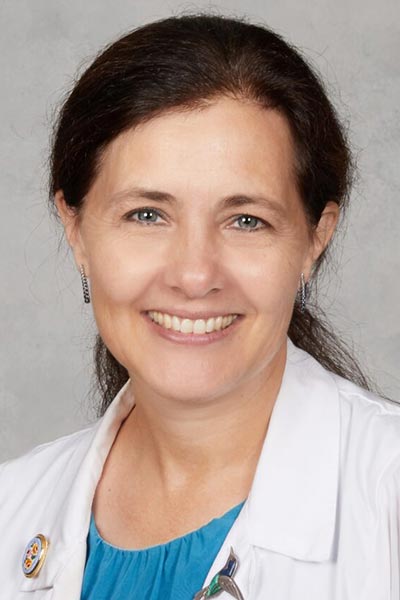
WCLC will feature novel approaches and new clinical trial results in thoracic malignancy. However, Plenary Session 3, the Presidential Symposium, offers what could be the single most-impactful 90 minutes in Singapore. The Presidential Symposium includes the abstracts judged by IASLC leadership to have the greatest potential impact in the thoracic oncology field. Plenary Session 3 will take place from 08:30 –10:00 SGT on Monday, September 11, in room 406 at the Suntec Singapore Convention & Exhibition Center. The session will also be livestreamed and available on-demand for virtual attendees.
“When we select abstracts for the Presidential Symposium, we want to bring the latest breaking news with an aim toward trials that may be practice-changing,” said IASLC President Heather Wakelee, MD, Professor and Chief of Oncology at Stanford University School of Medicine in Stanford, California. “We also recognize that IASLC is multidisciplinary, and we want to make sure that the Presidential symposium looks for exciting presentations across multiple tracks. We look for the most important clinical trials across the spectrum of disciplines in thoracic cancer.”

Plenary Session 3: Presidential Symposium
08:30–10:00 SGT, Monday, September 11, Room 406
As a medical oncologist, Dr. Wakelee said she is eager to hear the results of FLAURA2, a phase III trial comparing the safety and efficacy of first-line osimertinib, a third-generation EGFR inhibitor plus platinum-pemetrexed chemotherapy versus osimertinib monotherapy in patients with EGFR mutation-positive advanced/metastatic NSCLC.
An earlier phase III trial, FLAURA, reported a 54% reduction in the risk of progression or death for osimertinib monotherapy versus earlier generation TKI comparators and changed practice patterns in many parts of the world. Dr. Wakelee said FLAURA2 has the potential to be practice changing as well.
The symposium will also include the data from the randomized MARS 2 trial exploring the role of surgery in mesothelioma, updates from the Taiwan Lung Cancer Screening Program, and a large pathology study looking at an investigation of invasion criteria in lung adenocarcinoma.
“Most of WCLC is like a three-ring circus—with a lot of different things going on at the same time,” Dr. Wakelee said. “The Presidential Symposium is more focused. We cannot possibly include all the top science we are seeing here in Singapore—there are too many amazing developments to put into a single plenary—but these are the top abstracts from multiple disciplines. This symposium can help bring us together as a group to think about lung cancer from a multidisciplinary perspective. That multidisciplinary perspective is a key aspect of IASLC.
“This plenary is an opportunity for all of us to step outside our usual interest zones and hear some of the newest and most important science from other specialties as well. This is the science that will be the most impactful for all of us working against lung cancer.”
Of course, the Presidential Symposium is about more than science. The plenary session also represents a change in leadership. To begin the symposium, Dr. Wakelee will deliver the final President’s Address of her presidential term. She’ll look back at her accomplishments and what remains to be done. Incoming IASLC President Paul Van Schil, MD, PhD, Professor of Thoracic and Vascular Surgery, Antwerp University Faculty of Medicine, will then deliver his Incoming President’s Address, looking ahead at the future of IASLC.





